From the side streets at a parade to a witnessed moment of love, the sniff of a dog to an off-duty cop: street photography captures life in all its glorious, random moments. Preserving the intimate, the tender, the outrageous and the beautiful, the art form offers an insightful parallel to more official takes on life such as the news.
A new festival turns its lens on this vibrant art, with exhibitions, workshops and talks, but what makes street photography different? “There’s a crossover between photojournalism and documentary photography,” says award-winning photographer and Dublin Street Photography Festival co-director Des Byrne.
According to Byrne, photojournalism is about narrating events, but “street photography is an art form.” Growing up, a photographer living on his street in Bray, Co Wicklow, fascinated him, but “coming from a working-class background, I couldn’t afford to get film developed.”
Digital has changed that, of course, and has put cameras into the hands of almost every adult in Ireland. Everyone, he says, even the most illustrious of photographers, takes bad shots, but when you get a good one, there’s nothing like it.
[ Capturing the faces of Dublin’s inner city as the streets change around themOpens in new window ]
Street photography is increasing in popularity, says Byrne, who adds that legislation differs from country to country. In Ireland there is no law against taking photographs of people in public places, and that includes children, but harassment is illegal, and you need to obtain consent if you’re planning to use someone’s image for commercial purposes.

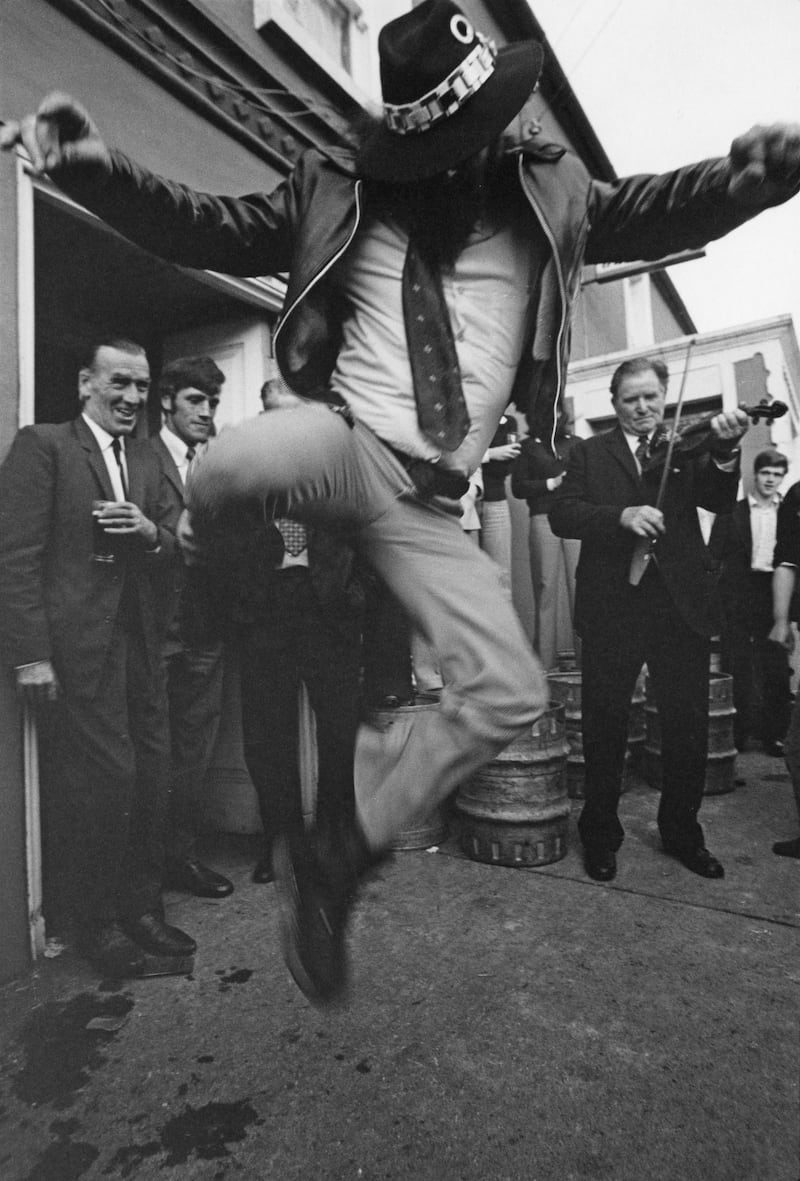
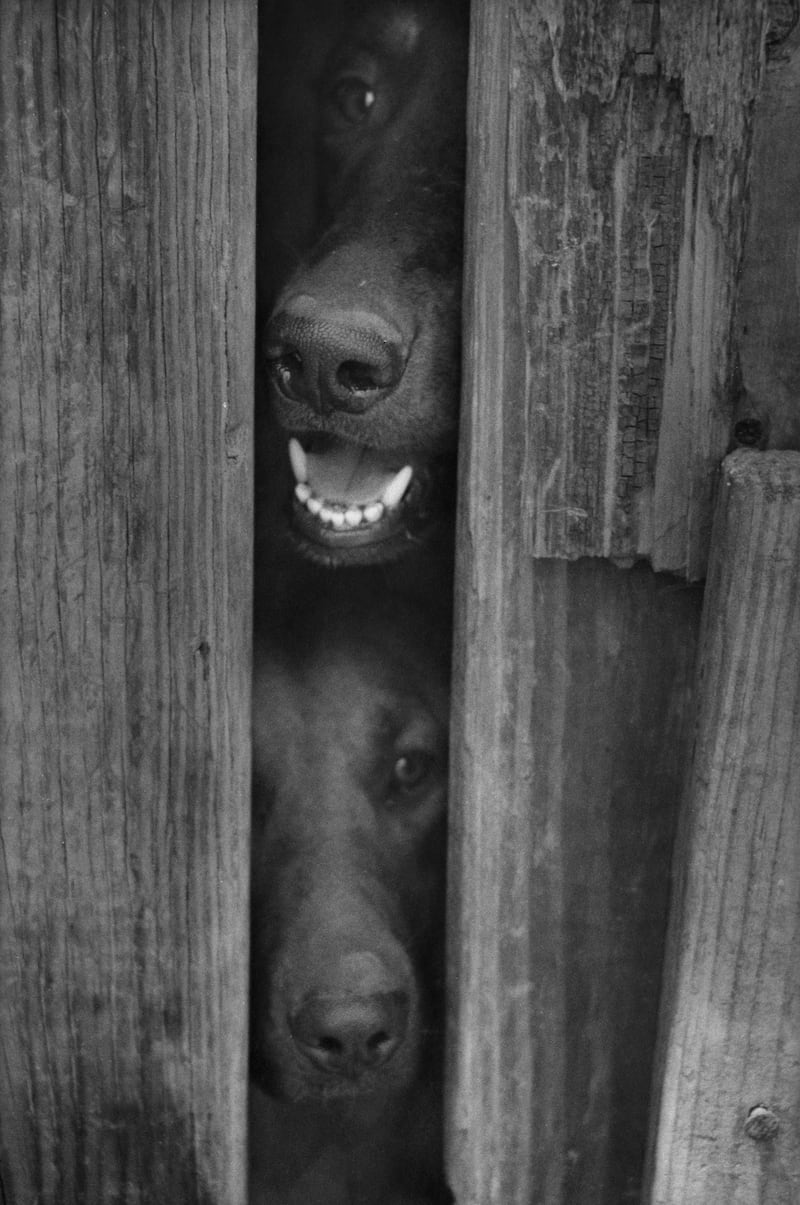
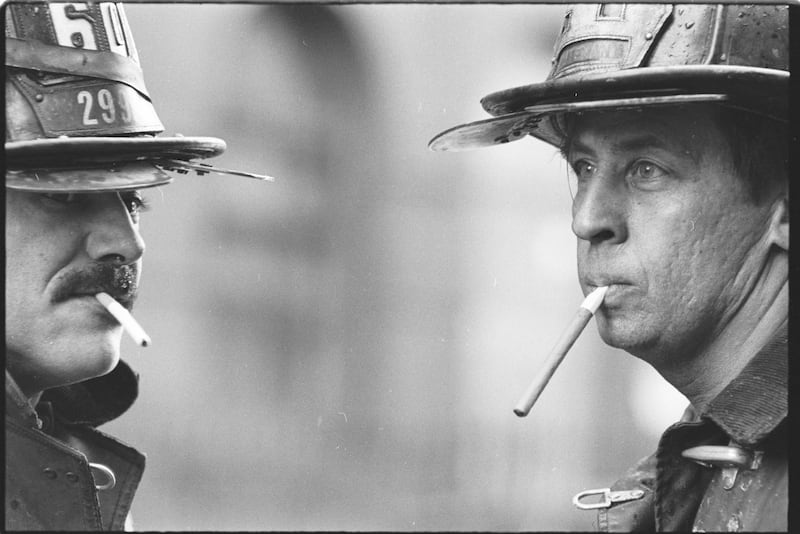
One of Byrne’s heroes is renowned New York photographer Jill Freedman, who died in 2019, and the festival includes a retrospective of her work. Freedman taught herself photography, to tell, as she put it, “a story in the blink of an eye”. Her work took her to the Resurrection City shantytown erected in Washington DC on the assassination of Martin Luther King, to SoHo and Studio 54, to Harlem and the Bronx, photographing police and firefighters, to Holocaust sites in Europe.
It also brought her to Ireland. “I loved the gentleness, the sweet shyness, the warm welcomes,” she wrote, but added: “each time I return I see the changes, the ugly noisy modern world.”
So what makes a good snap? Below, street photographers give their thoughts on 10 examples of the art:
1. 42nd Street, New York, 2018, by Melissa O’Shaughnessy
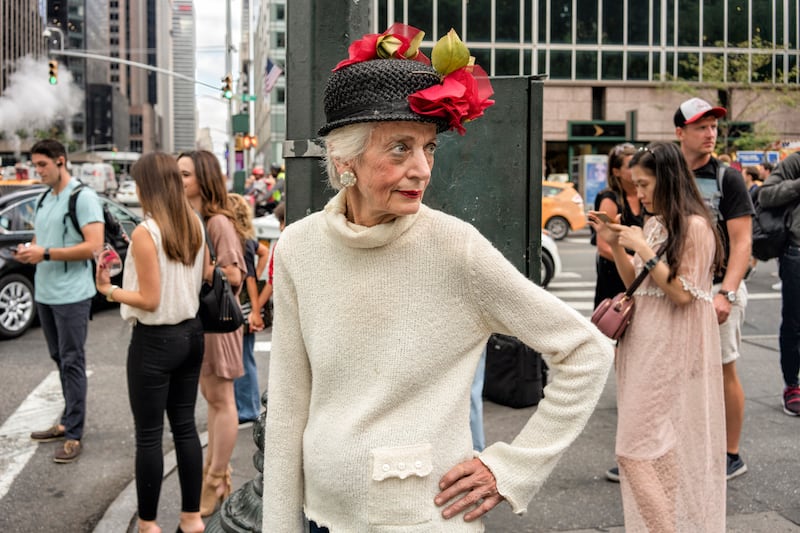
The subject of the image is a strong woman full of poise and grace. She is looking intently at something, and her gaze is echoed by the man in the baseball cap behind her. Meanwhile the others in the scene are unaware of whatever is happening off camera. The composition is perfectly balanced by having two women and a man on each side of the central character. – Paul Murray
2. Hawk on Bus by Tony O’Shea
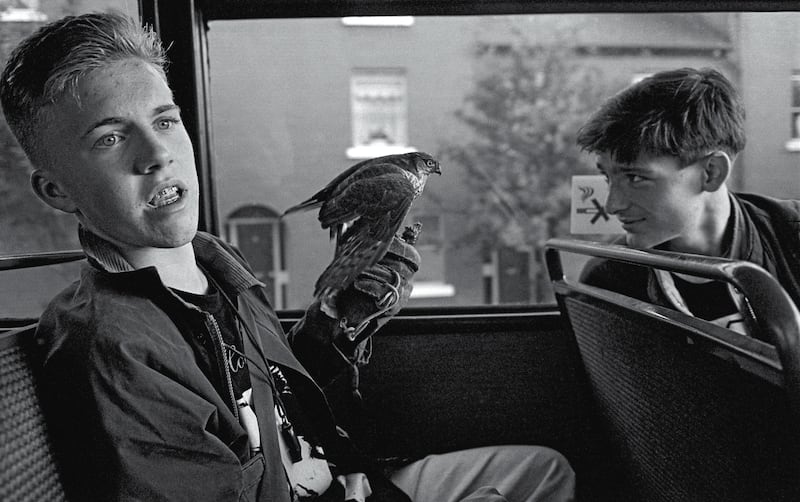
For me, this image occupies that great space where documentary meets street photography, evoking feelings of Ken Loach’s classic 1969 film, Kes. I love the sense of the “unusual in the usual” – two boys sitting on a bus, separated by a bird of prey; the brace on the teeth of the guy in the left suggests a sense of sort of awkward innocence, as does the cheeky smile of the boy in front of him. – Brian Lloyd Duckett
[ Another Ireland: the revealing photographs of Tony O’SheaOpens in new window ]
3. Men drink beer in a public market in Cruzeiro neighbourhood in Brasília, by Gustavo Minas
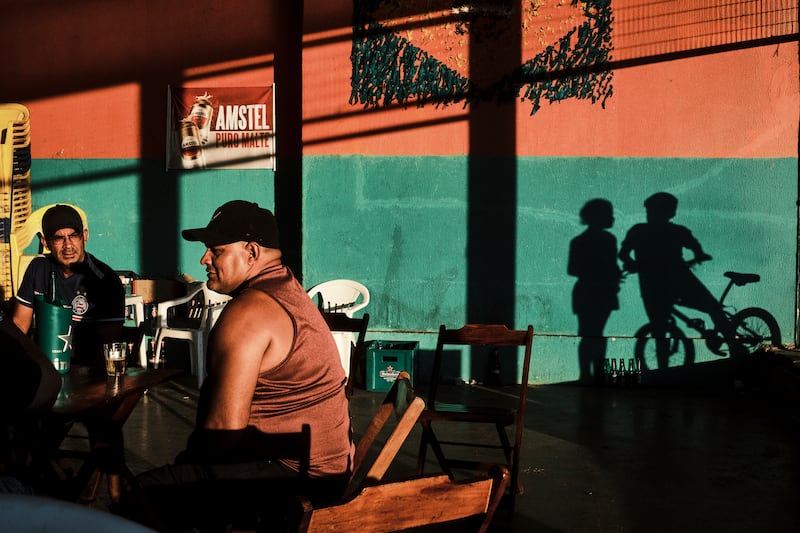
A good street photograph is one where the elements align in an interesting and aesthetic way. Besides the lush exquisite colours of this scene in Brasília, it is the excellent narrative. The past and the present, two friends chatting and hanging out with the shadow of youth not far away. – Danielle Houghton
4. Oxford Street, London, by Matthew Stuart
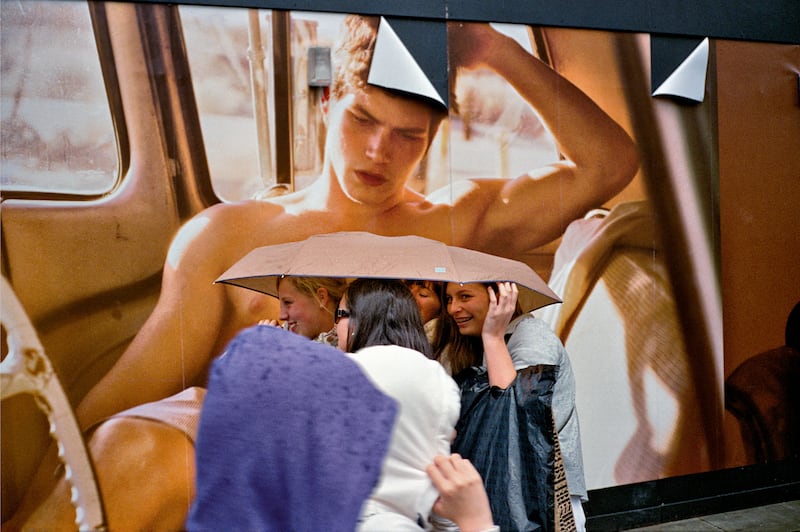
Matt Stuart is a master of capturing moments in life that other people would overlook. What is interesting is the way he has juxtaposed the image of the serious male model looking down on the group. This technique helps give the viewer a hint as to what Stuart was looking at. – Paul Murray
5. Valencia by Polly Rusyn
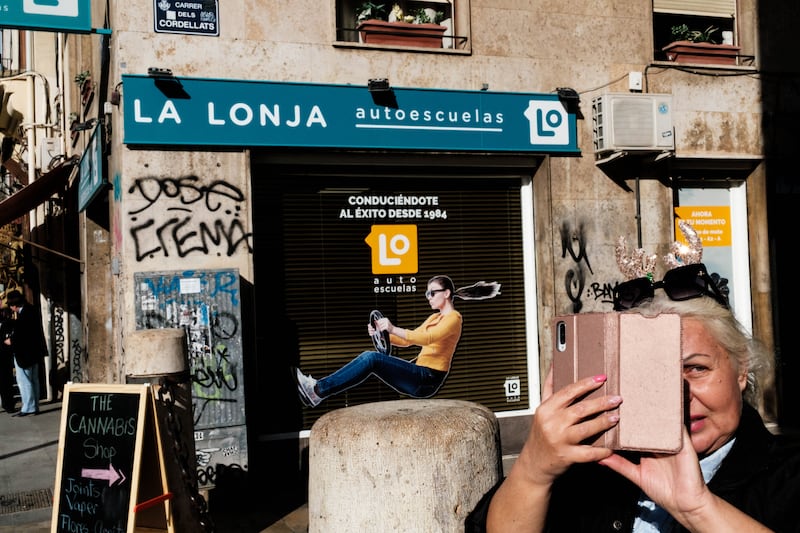
Filling the frame is a technique that is used a lot in street photography. This image taken in Valencia is a great example. Polly Rusyn has used every edge of the frame, starting with a central idea of having the bollard become a seat for the driving woman. Rusyn waited for a second figure to enter the image in the lower right. To have the older lady appear wearing matching sunglasses and a set of sparkly antlers is like divine intervention. – Paul Murray
6: Train, NYC, by Richard Sandler
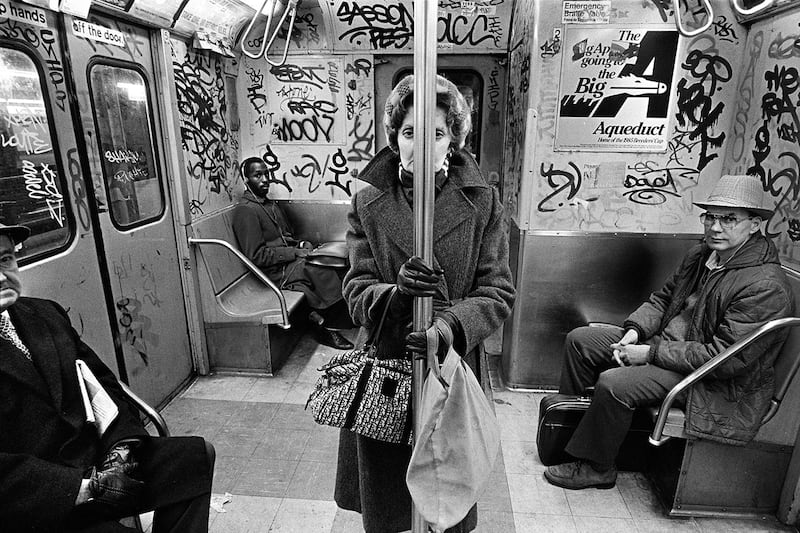
I often use this image as an example when I’m talking to students about street photography. I love the mirror-image effect, making it almost a diptych. The pole running down the middle creates tension and invites the viewer firstly to decide whether there’s some Photoshop trickery going on and, secondly, to create their own story about the lives of the four subjects. – Brian Lloyd Duckett
7: On the London Underground by Shane Taylor

What is good about this photograph is the timeless quality. If it weren’t for the hint of the people with masks to the right, we could imagine this being decades old. Here, such a lovely tender moment was caught by the photographer, making us wonder if she was giving comfort, or was she the one seeking support. – Danielle Houghton
8: London, by Lloyd Duckett
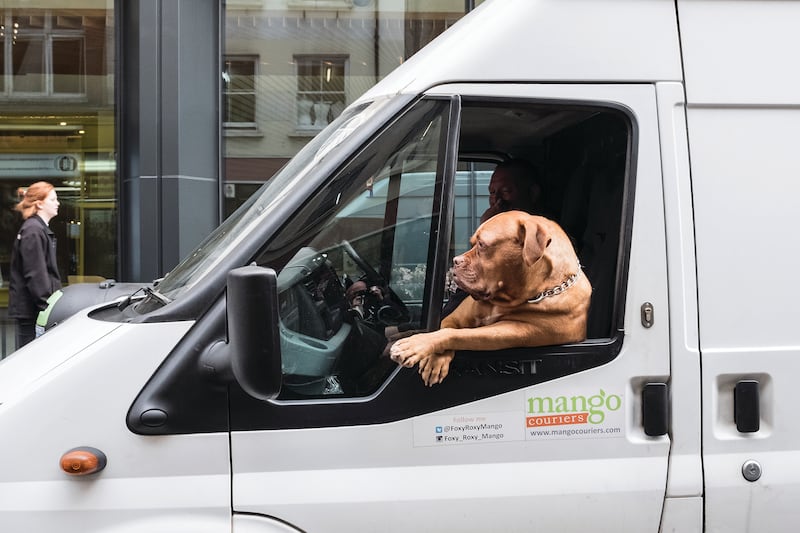
Animals are such a fun, historic part of street photography. Dogs acting in a human way are irresistible and this “mango courier” dog delivers that way. His elegant cross-paw pose, and his weary gaze out to traffic, as if he is resigned to rush hour, makes this a great capture. – Danielle Houghton
9. Strangers Powered by Horsefeed in the Phoenix Park, by Danielle Houghton
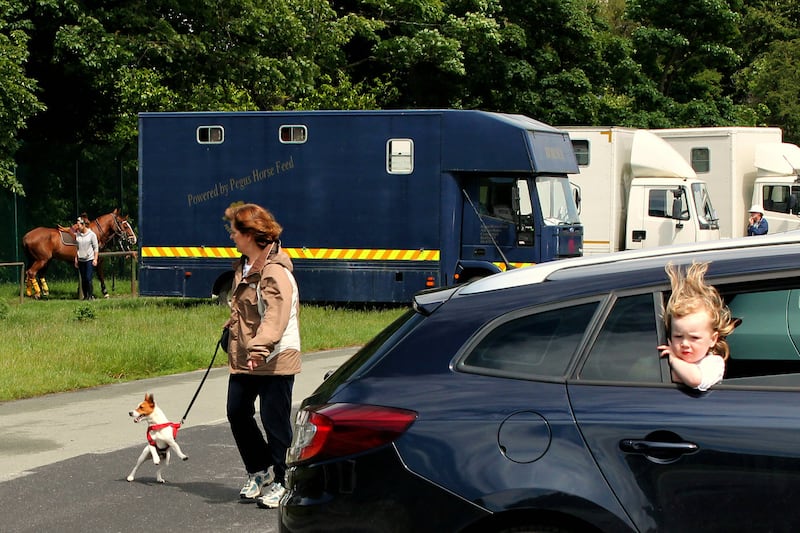
Subjects look in various directions, including one that engages the viewer directly. Danielle’s image highlights the significance of gaze direction, a timeless aspect of image-making known for its ability to guide the viewer’s eyes around a frame. – Kevin Lim
10 Berlin, by Martin U Waltz
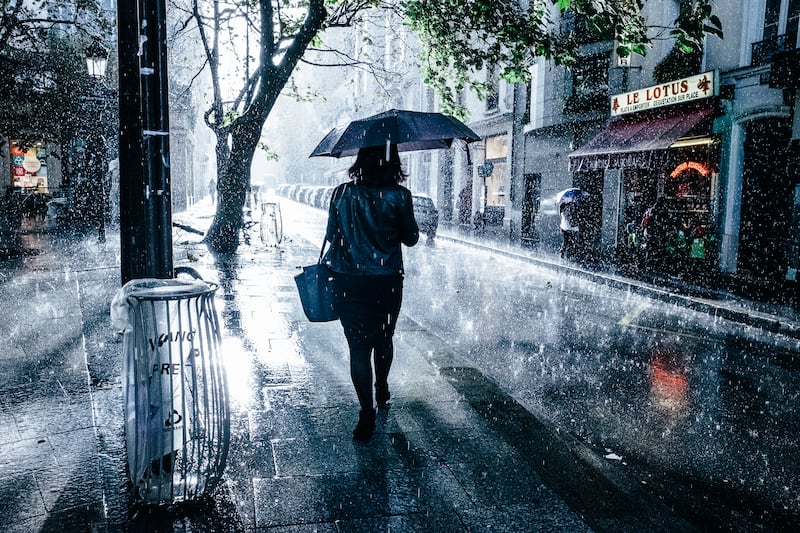
The visual trope, known as “Rückenfigur” [showing a person from behind, in the foreground of the image] is rooted in the tradition of German Romanticism, inviting reflection upon the enigmatic journey that lies ahead. The urban night rain imbues the street with an otherworldly aura, signifying transformation, the washing away of the old and habitual. – Kevin Lim
The Dublin Street Photography Festival runs May 3rd-6th, Charlemont Square, dspfestival.com. Find Des Byrne on Instagram @des_byrne_street_photographer

















